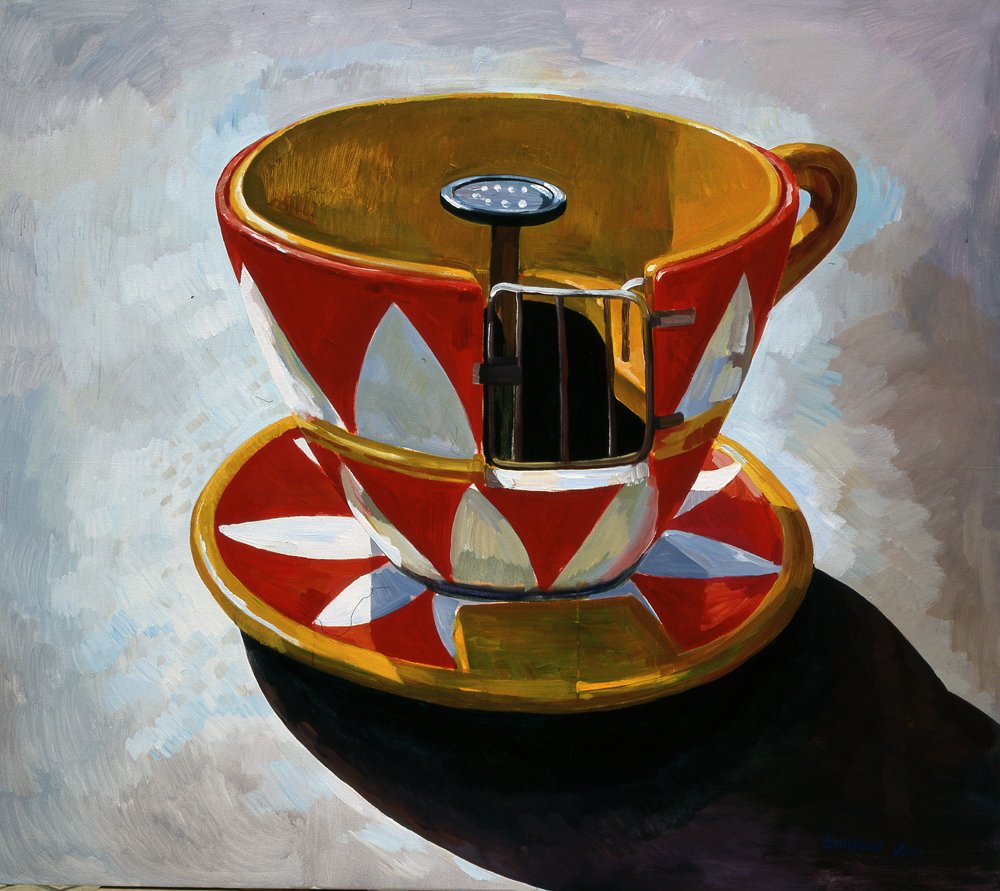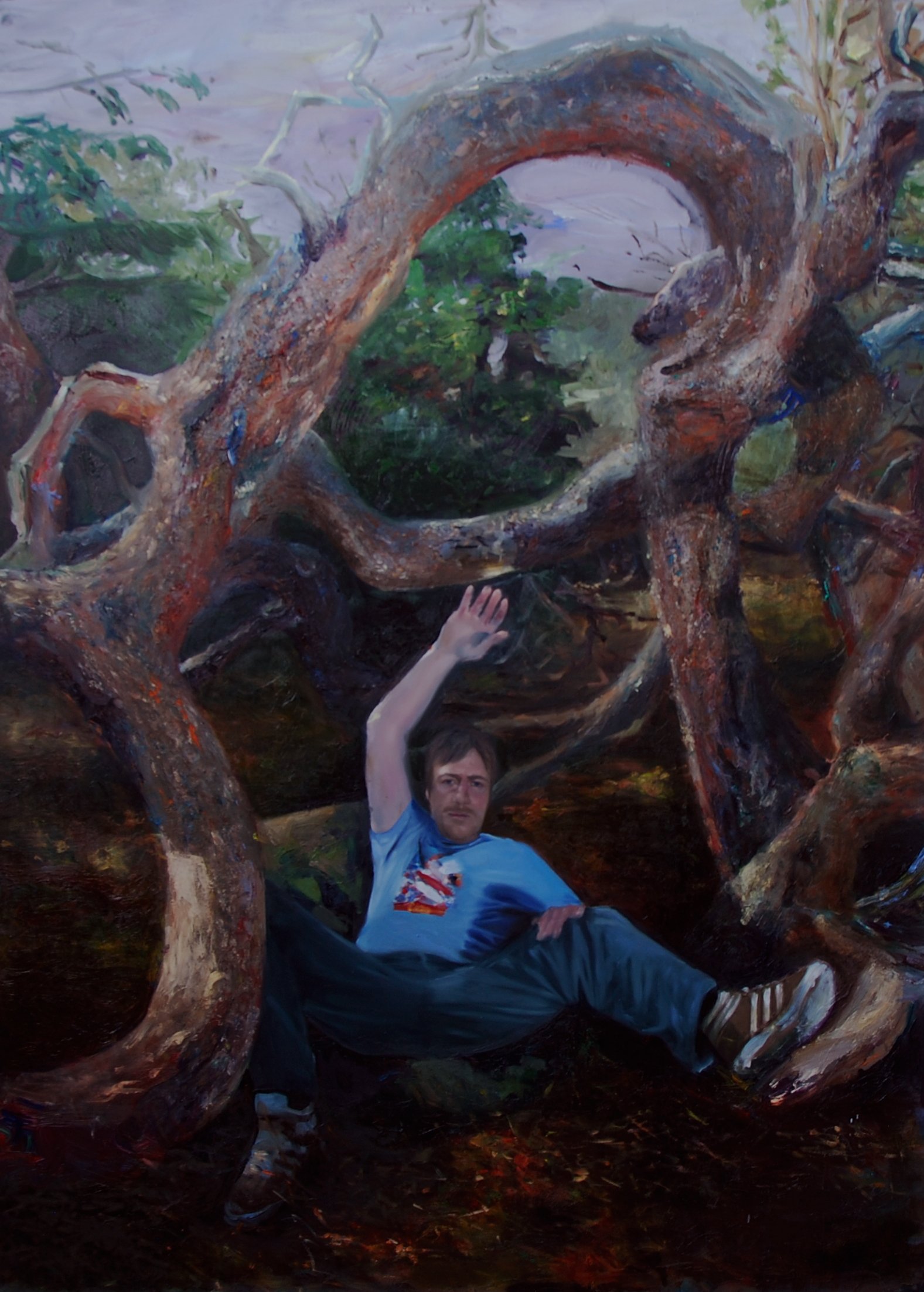Renovation and collateral effects / Oana Farcas, Catalin Petrisor, Liu Weijian
Galerie Dix9, Paris — March-April 2012

In the East we live with the ghosts of the past. If it is obvious that the last century was traumatic, the new generations are constantly investigating this past and exorcising it. The consequences of the cold war are experienced as collateral damage. Strangely, and even paradoxically, it is through painting, especially figurative, that the subject is approached. The knowledge to paint is mastered perfectly, but it is above all the subject that takes the scale and the analytical scale, and it is indirectly that the latter is highlighted.

About the artists
Oana Farcas
At the heart of the practice of Oana Farcas, there is the portrait. Portraits of women, men and children, real or fictional, scrolling on formats ranging from miniature worlds to large crowd scenes. The work of Oana Farcas presents a set of colorful figures that sometimes draw towards the fantastic. The characters are robust, often depicted in action, and sometimes combined with animal forms.
If his work has, without a doubt, a dreamlike dimension, he is tinged with a tangible physicality, which places him on the borderline of the visible and the invisible.
Oana Farcas was born in 1981 in Cluj-Napoca, Romania where she lives and works.
After a Ph.D at the University of Art and Design in Cluj-Napoca, Oana Farcas has been presented in several collective exhibitions in 2011, such as Aarhus Art Museum, Aarhus, Denmark, Plan B Gallery, Berlin, Germany, and had several solo exhibitions, including at the LARMgalleri in Copenhagen, Denmark and at the Francès Foundation, Senlis, France in 2011.
Catalin Petrisor orchestrates his work with the tools of painting and drawing because over his oils on canvas, he intervenes with the graphite tip of his pencils. It follows paintings that depict scenes and landscapes of no man's land that seem to be located in a dream world but are at the same time marked by the outward signs of a post-communist reality, jostled and transformed by the waves of globalization.
Catalin Petrisor was born in 1978 in Craiova, Romania, where he currently lives and works. He studied at the "Universitatea de arta si design" (University of Art and Design) in Cluj-Napoca where he obtained his master's degree in painting in 2004. Petrisor has since participated in numerous group exhibitions, such as the 4th Biennial contemporary art of Moscow and the artist's house of Tel Aviv in 2011.
Liu Weijian
In his paintings and drawings, Liu Weijian refers to his past life in China, his experiences related to education, work and the movement of workers. Embodied with nostalgia, his work is a form of criticism of the present and appears tinged with sadness towards things that could have been and never have been. Most of his works are painted in dark colors, at once close, distant and familiar, and create a sense of perpetual motion and unfinishedness.
Liu Weijian was born in 1981 in Hunan Province, he lives and works in Shanghai, China.
After a training at Shanghai Normal University College of Art, where he graduated in 2005, Liu Weijian has been featured in several group exhibitions, such as the Museum
of Modern Art in Oslo in 2007, at Pinacoteca Agnelli in Turin in 2010 or at Platform China
from Beijing, and has had several solo exhibitions, including at the Louis Vuitton Foundation in Hong Kong in 2010 and the ShanghART Gallery in Shanghai in 2011.